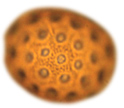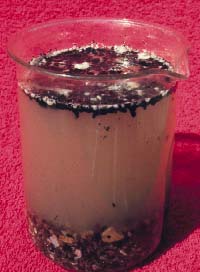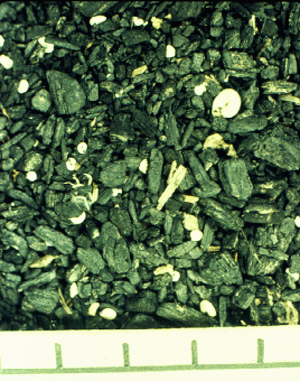
Illinois State Museum
How Do We Know?
What methods do scientists use to find out information from remains at a site?
Some clues to early farming are found in man-made artifacts such as tools and sculpture that are found in archaeological sites. Plant material, however, is less durable. Ancient sites are excavated after having thousands of years of soil accumulation, erosion, disturbance of the soil by worms and other organisms (a process called bioturbation), and even plowing.
Because of this,
scientists must use special techniques to recover the remains of ancient plant
materials. Most parts of a plant rot and disappear into the soil. However,
there are some parts of a plant that can survive. If conditions are right,
pollen
becomes fossilized (such as the pollen grain shown above).
Seeds, nutshells, and hard rinds like those on gourds may become carbonized.
Scientists can use procedures such as core-sampling, flotation, and radiocarbon
dating to recover plant material from soil.

Illinois State Museum
Flotation
Plant remains such as bark, wood, seed, and nutshell are often found where people once lived, but rarely in their original state. Most preserved plant remains have been carbonized, burned into charcoal through contact with fire.
Archaeobotanists (scientists who study fossil plants) use a process called flotation to recover plant remains. Plant remains are found by sieving dirt through fine-mesh screen wire to remove large objects. The dirt is then placed into a container of water and gently shaken. Ideally, once released from the dirt, plant charcoal floats to the surface where it can be collected. The scientists identify plant charcoal by comparing the shape and appearance of each specimen with charred modern examples.

Illinois State Museum
The identifications of the different plant remains help us learn about past environments, human diet, and other uses of plants, such as the making of fabric and farming practices. For example, changes in the size of seeds of certain native plants suggest that they were improved by cultivation. The comparative number of various seed types can give a clue to the diet of the society.







